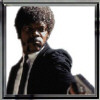Log in
Similar topics
Latest topics
Saturday 7/7/18
2018-07-07, 21:07 by Gary M Jones
I was at the field today between 14:00 & 15:00 all on my own , good flying too. There is a dead sheep along the fence line towards the gate from the pits, I saw the farmer so reported this to her. I hope no one had plans for a BBQ  .
.
Farmer …
Farmer …
Comments: 1
connectors
+3
Rich
Brian Colclough
Stubbsy
7 posters
Page 1 of 1
 connectors
connectors
Anyone know the difference between Futaba and JR/Hitec connectors? I just don't see a difference! 

Stubbsy- Posts : 1111
RDMFC Bonus points : 1373
Join date : 2010-08-05
Location : Stubbsy lives in Prestatyn
 Re: connectors
Re: connectors
Futaba have a keyway to maintain polarity but you can remove the key with a scalpel if you want to mix and match. If you do plug in the wrong way round you just get no action, the only servos to be careful of are some of the old Sanwa/ Airtronics ones as if you plug those in you 'll let out the magic smoke 

 Re: connectors
Re: connectors
So am I right in saying that basically they are the same connectors except futaba ones you can unlock and swap the pins around if you want to, but Jr/Hitec pins are stuck in place?

Stubbsy- Posts : 1111
RDMFC Bonus points : 1373
Join date : 2010-08-05
Location : Stubbsy lives in Prestatyn
 Re: connectors
Re: connectors
No,
You can unlock & change all the wires on most of the servos, if you were to use Sanwa then the wiring configuration is wrong the red +ve & black -ve wires are reversed.
The plug on the JR has chamfers on the top left & right, Futaba has a tang on the signal wire side, white wire, this prevents you plugging in the wrong way around, if you want to plug a futaba servo into a JR receiver or extension lead you have to cut off the tang & chamfer the top edges, the JR servo lead will go into a futaba receiver or extension lead without any modification, you just have to be careful as it can go in the wrong way around if forced
You can unlock & change all the wires on most of the servos, if you were to use Sanwa then the wiring configuration is wrong the red +ve & black -ve wires are reversed.
The plug on the JR has chamfers on the top left & right, Futaba has a tang on the signal wire side, white wire, this prevents you plugging in the wrong way around, if you want to plug a futaba servo into a JR receiver or extension lead you have to cut off the tang & chamfer the top edges, the JR servo lead will go into a futaba receiver or extension lead without any modification, you just have to be careful as it can go in the wrong way around if forced

Stubbsy- Posts : 1111
RDMFC Bonus points : 1373
Join date : 2010-08-05
Location : Stubbsy lives in Prestatyn
 Re: connectors
Re: connectors
But there's more than just the housings,
When you get down to genuine Futaba and JR connectors (and others too), you will find the actual metal pins and sockets do differ between makes. Some use round and others square. Also the sizes and the method of providing a friction grip vary.
They are all made from pre-crimped flat sheet presented on a roll. Some are plated and even gold flashed. They are usually supplied factory assembled to the wires by an auto crimping machine or hand crimper. Unusual to find soldered connections.
Some miss matched combinations fall apart. Only the friction of the plastic housings hold it all together and fool you into thinking it's a good connection.
I prefer genuine JR myself simply because I've stuck with it over the years and it's worked well for me. No problems encountered.
I do use other makes but only after checking they will be OK to use
When you get down to genuine Futaba and JR connectors (and others too), you will find the actual metal pins and sockets do differ between makes. Some use round and others square. Also the sizes and the method of providing a friction grip vary.
They are all made from pre-crimped flat sheet presented on a roll. Some are plated and even gold flashed. They are usually supplied factory assembled to the wires by an auto crimping machine or hand crimper. Unusual to find soldered connections.
Some miss matched combinations fall apart. Only the friction of the plastic housings hold it all together and fool you into thinking it's a good connection.
I prefer genuine JR myself simply because I've stuck with it over the years and it's worked well for me. No problems encountered.
I do use other makes but only after checking they will be OK to use
Guest- Guest

Mark Barnes- Club Secretary
- Posts : 6607
RDMFC Bonus points : 8240
Join date : 2008-11-16
Location : Rhyl North Wales
 Re: connectors
Re: connectors
If there's any question about the plug being loose and a possibility of coming out in flight then I put glue on the plastic parts. Before I was a butcher I used to tread a piece of fishing line through the wires and tie it round the receiver

Allan Patrick- Committee Member
- Posts : 1620
RDMFC Bonus points : 1842
Join date : 2009-07-19
Location : Colwyn Bay
 Re: connectors
Re: connectors
By far the highest percentage of my crashes have been down to thumb issues or deadsticks not had a single one I could put down to a dodgy servo connector and I've been mix and matching them since Adam's dog was a pup 
 Re: connectors
Re: connectors
Another interesting point about the sort of connectors used in servo plugs, is that they are typically only rated for about 50-100 mate/unmate cycles. Fine for normal use, but not so fine when you use them on things that need dismantling after every flight.
Of course, that number is a manufacturers spec on the contacts, so in reality they can last much longer than that. Nevertheless, I find it prudent to replace those connectors with something a bit more robust (such as the MPX green 6 pin jobbies on the wings of gliders)...
Cheers
Andy
Of course, that number is a manufacturers spec on the contacts, so in reality they can last much longer than that. Nevertheless, I find it prudent to replace those connectors with something a bit more robust (such as the MPX green 6 pin jobbies on the wings of gliders)...
Cheers
Andy

Andy Sayle- Club Chairman
- Posts : 4738
RDMFC Bonus points : -487569788
Join date : 2008-11-16
Location : Abergele, North Wales
 Re: connectors
Re: connectors
To address this issue I am using a multiway connector from RS for a number of years. Checking now I couldn't see a spec for the number of mate/unmate cycles however in practice they are very good and I have never had a dodgy connection over many dozens, probably hundreds, of cycles and ten or more plug/socket combos. They are fiddly as one has to crimp the terminals in the plug part and solder the socket part to a piece of stripboard but definitely worth the effort imo
http://uk.rs-online.com/web/search/searchBrowseAction.html?method=searchProducts&searchTerm=232-9959
http://uk.rs-online.com/web/search/searchBrowseAction.html?method=searchProducts&searchTerm=232-9959

Allan Patrick- Committee Member
- Posts : 1620
RDMFC Bonus points : 1842
Join date : 2009-07-19
Location : Colwyn Bay
 Re: connectors
Re: connectors
Another advantage is that they are 0.1" pin spacing so a regular servo connector can plug into the socket (Useful for testing and charging)

Allan Patrick- Committee Member
- Posts : 1620
RDMFC Bonus points : 1842
Join date : 2009-07-19
Location : Colwyn Bay
 Re: connectors
Re: connectors
Or just use ASHLOK

Tim- Committee Member
- Posts : 2968
RDMFC Bonus points : 3235
Join date : 2008-11-18
Location : Tim Mackey lives in Deganwy
Page 1 of 1
Permissions in this forum:
You cannot reply to topics in this forum



» Need help on how to just directly power my Detrum RXC6 6CH 2.4Ghz Receiver?
» 2019 Llanfair TH Village Fete
» Police crash
» Bit of indoors